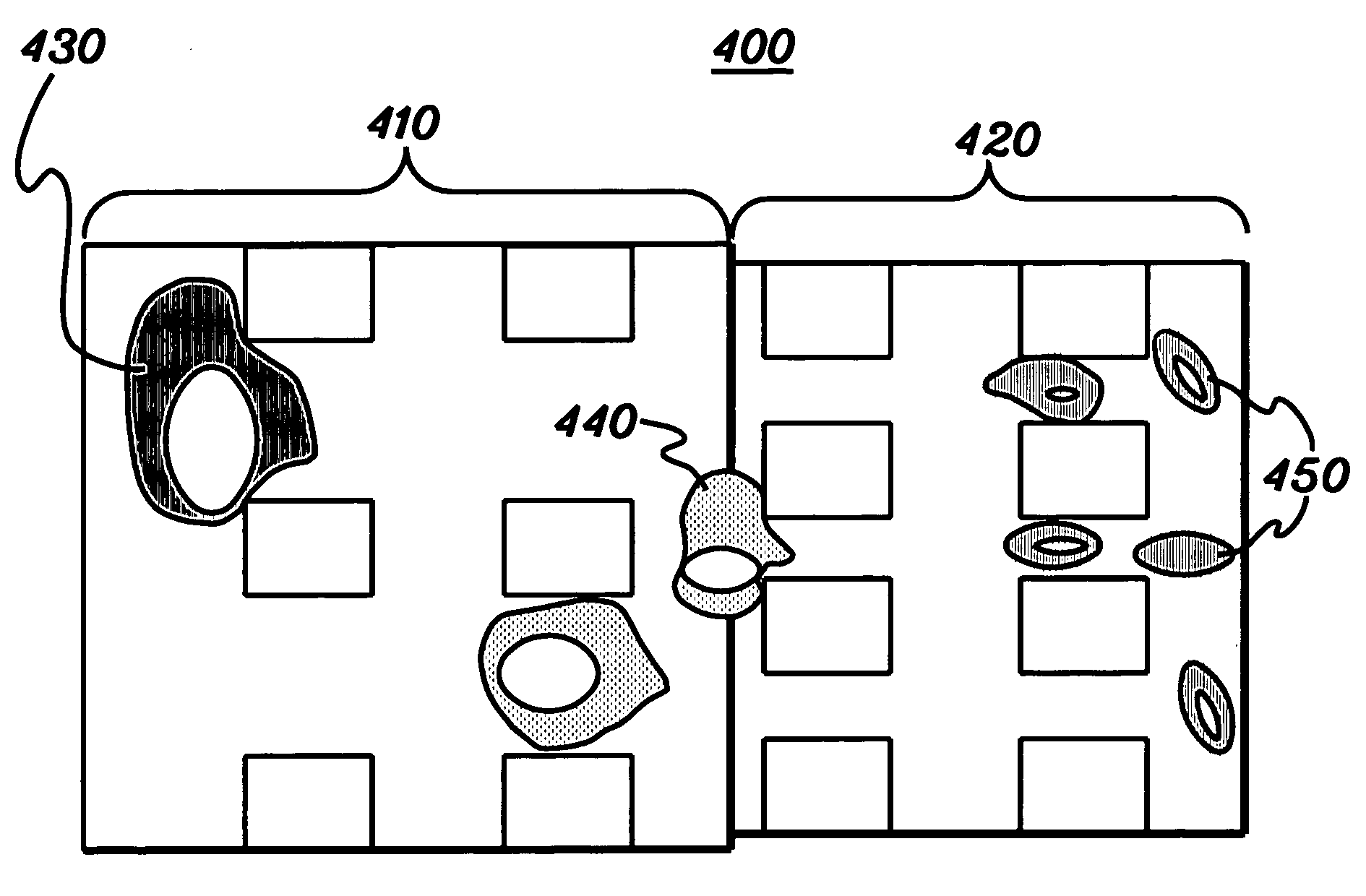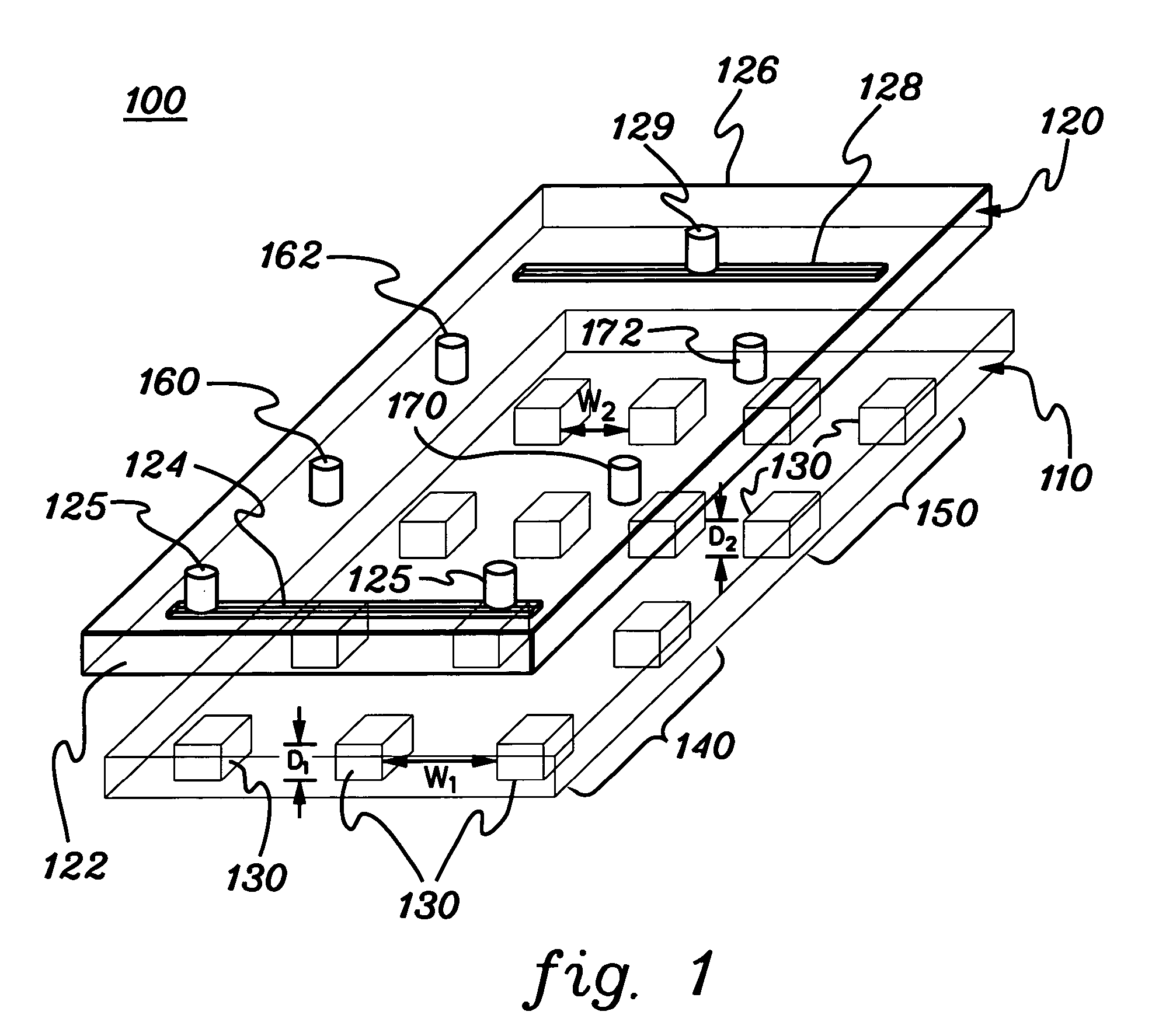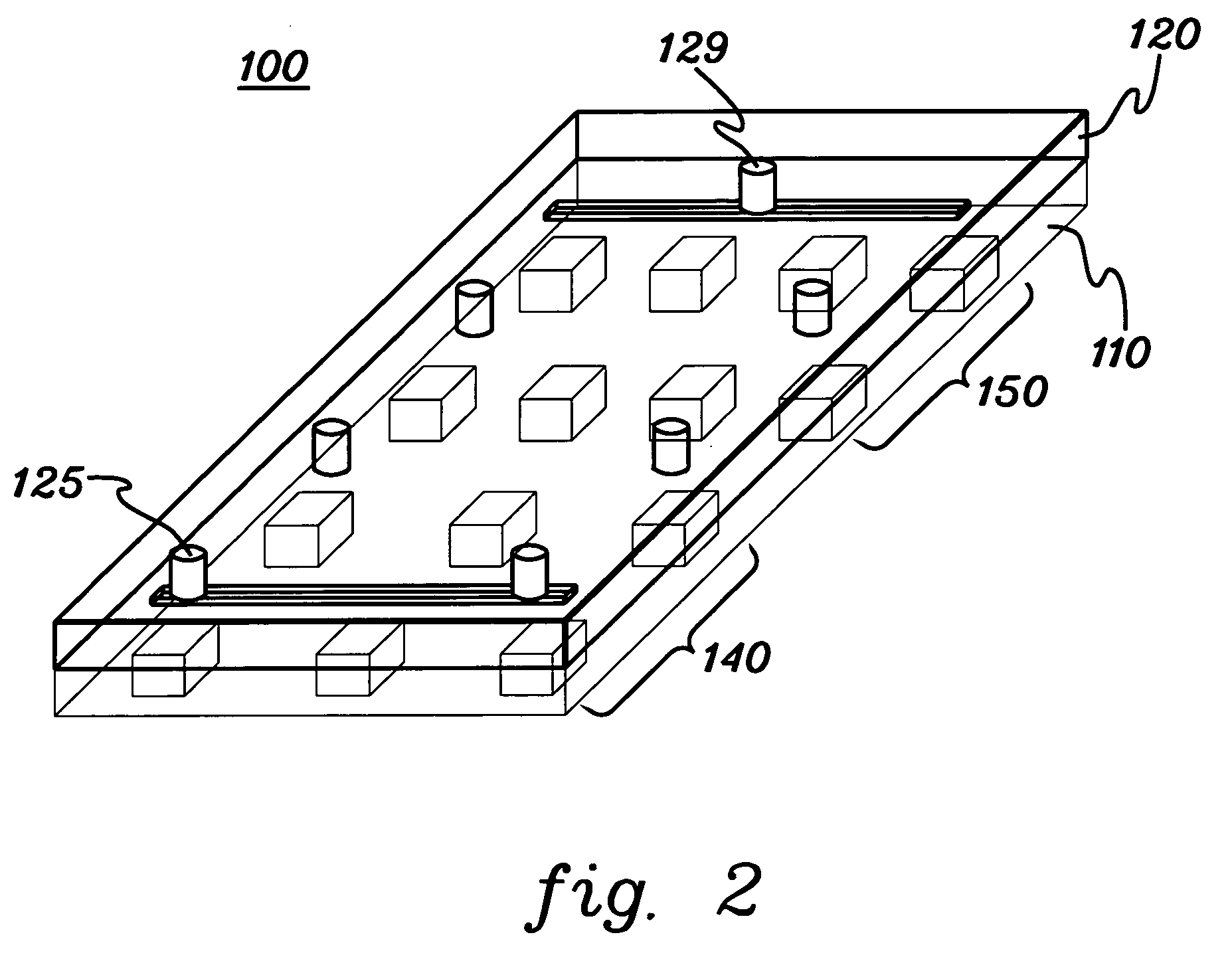Apparatus and method for sorting microstructures in a fluid medium
a fluid medium and apparatus technology, applied in the field of apparatus and methods for sorting or fractionating microstructures, can solve the problems that traditional methods have not been adequate for this particular application
- Summary
- Abstract
- Description
- Claims
- Application Information
AI Technical Summary
Benefits of technology
Problems solved by technology
Method used
Image
Examples
example 1
Non Invasive Prenatal Genetic Testing
[0071] For this application, maternal blood is drawn intravenously and the apparatus is used to isolate the fetal nucleated red blood cells (fNRBCs), thus eliminating the current invasive procedures such as amniocentesis or chorionic villus sampling. The test can be performed starting from the sixth week of gestational age, and has the potential to help support a clinical diagnosis or screen for a particular health problem throughout the duration of the pregnancy. Theoretically, testing would not be limited to certain gestational periods. In addition, the technology is likely to reduce the cost associated with the prenatal diagnostic testing.
example 2
Metastatic Cell Isolation
[0072] In this application, the apparatus is implemented to isolate metastatic cells from a cancer patient's blood to monitor treatment and detect relapse at an earlier point than is currently possible. Blood can be sampled more frequently, leading to more detailed follow-up and improved patient management, including “personalized” drug regimens. Further research may confirm that testing can be performed on cells isolated from the peripheral circulation, instead of using more invasive procedures such as needle aspiration and testing of non-metastatic cells. Additionally, isolating metastatic cells may provide a means to study cell tumor gene expression in order to identify efficacious drugs at the time of diagnosis and to aid in prognosis and staging.
example 3
Bone Marrow Purging
[0073] Prior to transplantation, the apparatus can be used to “filter” cancer cells from bone marrow. Passing the sample through the device retains the cancerous cells while allowing the healthy cells to migrate through where they are collected at the opposite end. This cancer free sample can then be transplanted back into the patient.
Experiments:
[0074] First-generation devices had channels that were 5, 10, 15 or 20 μm wide, and 5, 10, 15 or 20 μm deep. The channel width and depth were constant across the entire device. Experimentations with various combinations of channel widths and depths were performed. When the channel dimentions were larger than the neuroblastoma (NB) cell (≈10 μm in diameter), such cells passed through the entire device without resistance. (The used NB cell line was: SK-N-MC, and was purchased from ATCC, Manassas, Va.) A reproducible flow pattern could not be established when the channel dimensions are comparable to or smaller than the c...
PUM
| Property | Measurement | Unit |
|---|---|---|
| angle | aaaaa | aaaaa |
| angle | aaaaa | aaaaa |
| temperature | aaaaa | aaaaa |
Abstract
Description
Claims
Application Information
 Login to View More
Login to View More - R&D
- Intellectual Property
- Life Sciences
- Materials
- Tech Scout
- Unparalleled Data Quality
- Higher Quality Content
- 60% Fewer Hallucinations
Browse by: Latest US Patents, China's latest patents, Technical Efficacy Thesaurus, Application Domain, Technology Topic, Popular Technical Reports.
© 2025 PatSnap. All rights reserved.Legal|Privacy policy|Modern Slavery Act Transparency Statement|Sitemap|About US| Contact US: help@patsnap.com



